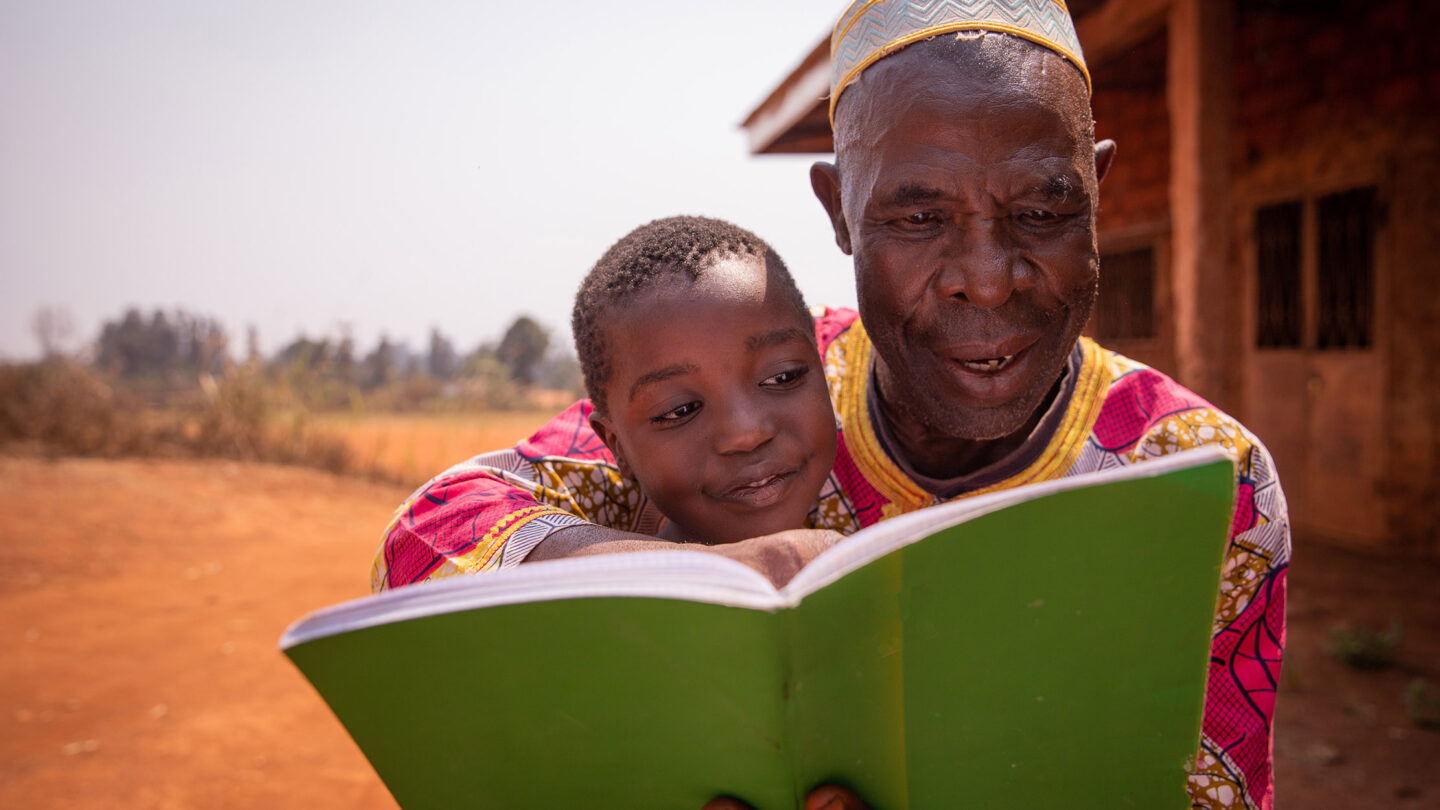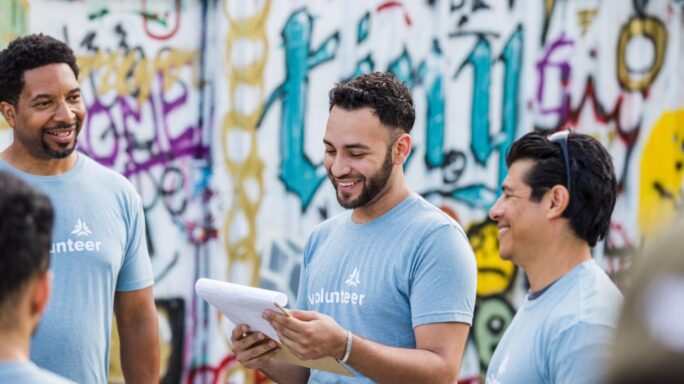A Q&A with Shari Freedman, CFO of Room to Read

I recently had the opportunity to sit down with Shari Freedman, the Chief Financial Officer for Room to Read, an international NGO that transforms the lives of millions of children through literacy and gender equality in education. In this blog, Shari shares her vision for Room to Read, her incredible path to parenthood through international adoption, and how this organization is forever impacting the lives of children and young women all over the globe. Don’t miss what Shari has to say…
Andrew Sevillia: To start, can you tell me a little bit about yourself, Shari, and share your story?
Shari Freedman: Definitely! I’ve been in international finance for a little over 30 years. I started with my undergraduate degree in International Relations and Economics from American University, and I have an MBA from Georgetown University in International Finance. I’ve worked at all sorts of global branded organizations that were high growth, like GM, PepsiCo, and GAP.
At the end of 2001, I had the opportunity to take a sabbatical in India between jobs. I had never not worked before, and I thought to myself, “What an opportunity, to find meaningful work that would really make an impact.”
I found an opportunity in Delhi, where I volunteered as an English teacher in a high-need school and then as a volunteer working with women in the Himalayan foothills around microlending. Coming out of that experience, I found that it was important to me to have the opportunity to further hone my financial skills but with more mission-centric organizations. It was also the beginning of my path to parenthood where I decided to become a parent and chose to adopt my daughter from Kazakhstan.
I feel very privileged to have had the kind of education and family upbringing that I’ve had – my parents encouraged me to dream big, choose boldly and leap into the unknown. I felt incredibly supported growing up, there was nothing that I couldn’t do, if I wanted to. As I looked to motherhood, that background came to the forefront. I deeply believe that it is the right of every child to receive a quality education. More so, it is our shared responsibility to ensure that every child receives an education that affirms their potential, with the resources and support to achieve their dreams.
Almost sixteen years later, being a parent to my daughter, Rachel, is the greatest thing I’ve ever done. Sometimes children hold a mirror up to you — the good and the bad. You see the best in yourself and sometimes you see things that you need to work on.
I am committed to Rachel’s lifelong education, her growth, her joy and everything else in between, whether it’s school, mother-daughter travel, or just the time we spend hiking in Marin or walking our dogs in our neighborhood. Rachel’s education is part of my passion, and it’s a joy to share that with her through my work at Room to Read. Rachel has visited our Girls’ Education Program in schools around the world, and I see the life skills that we teach our students in her – she is so confident in who she is and her capabilities. She has her own sense of life purpose, and I couldn’t be prouder of being her parent.
Andrew: That is an incredible story, Shari, and I know you’ve just scratched the surface. I’d love to hear more about your role and what Room to Read does.
Shari: I am the Chief Financial Officer for Room to Read. We’re an international NGO, who’s helped more than 18 million children in 16 countries around the world unlock their full potential through education. In 2000, we started out as an organization that builds libraries and have grown and scaled from there. In the beginning, we were really well known for being the people that built libraries in Nepal. When the tsunami happened in Sri Lanka, we were invited and went in to build libraries.
One thing we know about teaching children to read, is that they need books in their local languages. When we started, we had donations of books from all over the world and so many of those books were in English. Which is great, unless you’re working in Sri Lanka, or Nepal, or Vietnam, which we were. So, we grew our program to publish books in children’s mother tongues, using local authors, illustrators and designers that not only are familiar with local language but also are attune with what’s happening in the community. Books should speak to children, they should see themselves and their stories in the pages of a book, as well as be able to use those books as a window into other experiences.
Now two decades into our mission, Room to Read is impacting the entirety of the literacy ecosystem. We publish children’s books in local languages, equip schools with stocked libraries, train educators how to teach reading, in a way that engages children and encourages them to love learning. As of today, Room to Read has published 1,576 children’s books in 42 local languages.
Andrew: For the girls that participate in Room to Read’s Girls’ Education Program, do you have any insight into their growth and their lives with the program.
Shari: Yes! We’re obsessed with data, and measurements at Room to Read. Whether our Literacy Program or our Girls’ Education Program, we’re finding that we’re able to effectively reach children and provide them with new opportunities and resources. Children are reading at a higher fluency; they have a love of reading and are finding the support to go after opportunities.
We have a Girls’ Education Program, because we think that the most important thing for a girl is to have a choice; to have the skills to navigate life and do so independently. We support girls throughout their high school lives to get them to graduate and then to be prepared for where they go next in life. It’s funny because so many think that girls’ education is just for improving the lives of women, but it’s not! Educated women improve all of our lives, The World Bank actually lists educating girls as a “strategic development investment.” The evidence shows that girls’ education brings a wide range of benefits for children, communities and society, as a whole. You can’t be in the business of world change without tackling gender inequality.
Over the past 20 years of our work, we’ve pulled together measurements and different analysis that lets us know girls’ risk of dropping out of school. If girls are missing class, their parents are not attending workshops, they’re not doing well in specific areas, then they’re at risk for dropping out. Critical to mitigating that and teaching life skills, are our social mobilizers who work closely with participants in our Girls’ Education Program. They go to the girls’ homes, they meet parents, they hold mentoring sessions, they speak with teachers and stakeholders, to ensure that girls receive the support she needs to stay in school and have agency over her life.
Our program participants have a 96 percent advancement rate, with 81 percent enrolled in further education or employed within one year of graduation. It’s incredible. More so, we see the proof and impact of our work, when we meet with them later in life; working, getting married, having children themselves, and even educating their own communities.
Andrew: That’s incredible. As a father of young daughters, I really appreciate this amazing work you’re doing. In all the years that Room to Read had been operating, how many girls have gone through the program?
Shari: We had quite the growth spurt, and around 81,000 girls in 10 countries have gone through our program. As we’re begin our new strategic plan, we’re looking at ways to scale and broaden our programs, increase government adoption, and see systemic change throughout the world.
We know how to solve for illiteracy and gender inequality in education. And we’re working to reverse the notion that the end to these challenges is impossible. Right now, we’re on track to benefit the lives of 20 million children by the end of 2020, and by 2025, we aim to reach at least 40 million children worldwide, and transform the lives of children in at least 10 additional new countries.
Andrew: That’s fantastic, Shari. That’s amazing that you’re operating in 16 countries now! What do you think is next for Room to Read?
Shari: Yes, it’s really been a journey and one that’s needed us to invest into new technologies and ways of structuring our internal teams. Every organization that grows – especially one with as ambitious plans like Room to Read, will need to reassess, reconfigure and commit to ways of working that allow it to expand without losing its core mission or efficiency.
What I’m proud of is the flexibility of our work, our ability to have standard, consistent projects in countries like India, Vietnam, Tanzania, Laos, South Africa, and more, that really change the framework of a country’s internal structure when it comes to addressing literacy, gender equality and education as a whole. And then on the other side, create custom innovative projects that push the boundary of how we solve for age-old challenges in education and our global community.
In Rwanda, right now, we’re engaged in a multiyear USAID-funded project to improve reading instruction for 1 million children. Through this project, Room to Read developed an innovative classroom observation instrument that’s allowing us to bring the government crucial insight on the best ways to teach children how to read and best practices for teachers. A few years ago, we were able to publish 600,000 books for children in Jordan, many of them refugees. Seeing the need and understanding the strain on the school system, Room to Read jumped into action.
We were able to train local authors and illustrators in partnership with three Amman-based publishers to develop 20 new children’s titles that both Jordanians and members of the refugee community would enjoy. 600,000 copies of these vibrant storybooks would land in every primary school in Jordan, as well as in refugee camps, orphanages and other at-risk communities. It was the first time we’ve ever done anything in Arabic languages, and we were able to give them books that not only recognized the children and their experiences but allowed them to see themselves as heroes and survivors in their story. When we think about the power of books, the impact of our work, that was it. That was an experience that changed lives.
Working at Room to Read is the definition of changing the world. Regardless of your position. World change takes all of us, and as CFO, it’s an honor to be able to have the tools and skills to plan for the future, ensure our sustainability, and more importantly, expand our reach and impact.
To learn more about Room to Read and the phenomenal impact they have around the world, check out their recent video here.
Case Study - Room to Read
Nonprofit uses Sage software to build the financial infrastructure to support its rapid expansion







Ask the author a question or share your advice